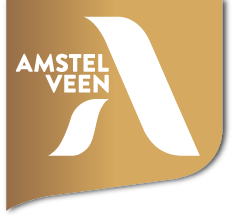
Lonneke van der Palen
In the photographs of Lonneke van der Palen (1985), everyday objects are the protagonists: from a cutlery holder, an unripe pepper and a clothes peg to a bottle of sunscreen or body parts in close-up. Her photographs are rooted in reality but are never documentary. Van der Palen chooses her subjects carefully, and rearranges, enlarges, adds or removes and filters out the noise. She reduces the visible world to a cleaned-up essence. This results in compositions in which form, colour and light are deliberately related. Although everything is staged, her images present a very realistic feel.
Lonneke van der Palen has made a selection from…
In the photographs of Lonneke van der Palen (1985), everyday objects are the protagonists: from a cutlery holder, an unripe pepper and a clothes peg to a bottle of sunscreen or body parts in close-up. Her photographs are rooted in reality but are never documentary. Van der Palen chooses her subjects carefully, and rearranges, enlarges, adds or removes and filters out the noise. She reduces the visible world to a cleaned-up essence. This results in compositions in which form, colour and light are deliberately related. Although everything is staged, her images present a very realistic feel.
Lonneke van der Palen has made a selection from over ten years of work, often made in series or with recurring themes. She, for instance, photographed countless objects literally from two sides: when creating the exactly right positioning, she also did so diametrically from the other side. Together, the two images almost form a three-dimensional image. Another example is the series Please Sit on Me, ordinary white plastic garden chairs she photographed in various places around the world. She depicted these chairs in such a way that they almost become characters - who sometimes have a longer life than us humans. As a result of her approach, other objects actually take on a dreamy, poetic quality, such as the jerrycans she constantly bumped into and then decided to photograph. And the pile of stones on a knee, created out of boredom, gets a decorative, almost abstract quality.
Unexpected connections
Although each image stands on its own, Van der Palen adds extra meaning in the exhibition by playing with surprising combinations on the wall and coming up with new titles to go with them. In the same way that she herself often works in an associative manner with the means she has available, she presents her images in the exhibition. The presentation of old and new work - captured in the studio or on location - side by side, results in intriguing and unexpected connections. Not only for the artist herself but also for the visitor: everyone has their own associations, makes their own stories. Breaking the traditional hierarchy of photographic genres and presenting images in different formats and ways - as blow-up wallpaper, in a frame or simply pinned on the wall - creates a surprising aesthetic. 'In this way, I hope to encourage people to have a more playful and conscious experience of everyday scenes.'
Lonneke van der Palen
Lonneke van der Palen graduated from the Royal Academy of Art in The Hague in 2011. Since her graduation, she has combined her free work with commissioned works. In recent years, her work has been shown at the Stedelijk Museum Schiedam, Nederlands Fotomuseum and Unseen Amsterdam, among others, and she has photographed for fashion houses such as Maison Margiela, Chloé and Paco Rabanne. Van der Palen also contributed to several international magazines including Le Monde d'Hermès, Numero and Wallpaper*. In June, her first publication Lemons Gazing at Mount Etna, in collaboration with design agency Our Polite Society and publisher Free Pony Press, will be published, which already promises to be very special.



